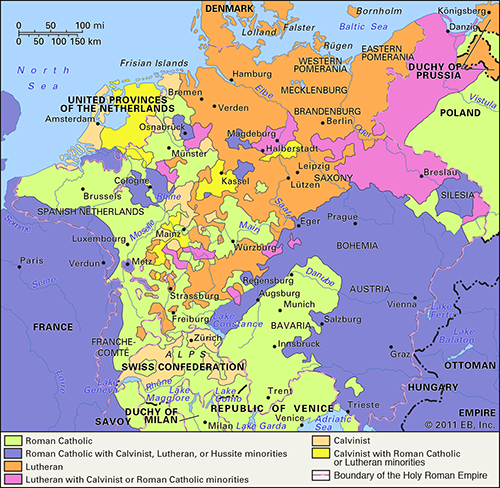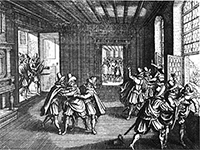The Thirty Years War
Part 1: Backdrop for a War The Thirty Years War was a deadly, decadeslong conflict that involved most of the major powers of Europe. It began as a war of religion and morphed into a war of opposition to territorial expansion. When peace finally reigned, millions of people were dead and much of the map of Europe had been redrawn. Europe in the 16th century was awash with discussions and conflict regarding religion. Perhaps the most influential leader of what came to be called the Protestant movement was the German monk Martin Luther, whose posting of the 95 Theses on a church door in Wittenberg in 1517 was one of the events that kicked off more than a century of sectarian struggles, many of them violent. As the number of adherents to Lutheranism grew, more and more conflicts took place between Protestants and Catholics. The Peace of Augsburg, signed in 1555, gave rulers within the Holy Roman Empire, itself a collection of more than 200 mainly German states, the power to choose whether their state could have Catholicism or Lutheranism as the state religion. 
Another well-known early Protestant leader was John Calvin, who was born in France in the early 16th Century and traveled throughout Europe, preaching the need to re-examine religious beliefs and practices. His ideas became very popular across Europe. The Peace of Augsburg did not mention Calvinism. Supporters of this religion in Germany went across state lines and formed the Protestant Union in 1608. The leader of this union was Frederick IV, the Elector of Palatine, a small but geographically and strategically important state on the Rhine River. Not to be outdone, Catholics a year later formed the Catholic League. In 1618, the Austrian archduke, Ferdinand II, was also the King of Bohemia. A devout Catholic, he sought to impose Catholicism on his subjects, who lived in what is now Austria and the Czech Republic. Ferdinand sent a handful of royal representatives to meet with a number of Bohemian nobles at Next page > An Ever-widening Conflict > Page 1, 2, 3 |
|
Social Studies for Kids
copyright 2002–2025
David White



 Prague Castle. The locals were so offended with Ferdinand's heavy-handed "proposal" that they threw his representatives out a window. Such began the open revolt that unofficially began the Thirty Years War. The actions of those Bohemian nobles came to be called the Defenestration of Prague, fenestration meaning the doors and windows of a building. The four men survived the 70-foot-fall. The symbolic damage, however, was done. (People in Prague had taken such drastic action twice before, in the 15th Century; none of those so defenestrated had survived.)
Prague Castle. The locals were so offended with Ferdinand's heavy-handed "proposal" that they threw his representatives out a window. Such began the open revolt that unofficially began the Thirty Years War. The actions of those Bohemian nobles came to be called the Defenestration of Prague, fenestration meaning the doors and windows of a building. The four men survived the 70-foot-fall. The symbolic damage, however, was done. (People in Prague had taken such drastic action twice before, in the 15th Century; none of those so defenestrated had survived.)
